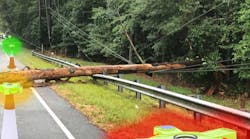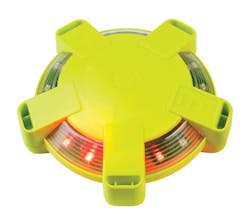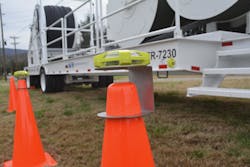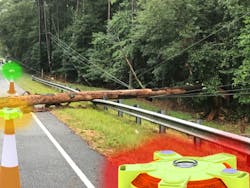Utility line work is still one of the 10 most dangerous jobs in America. In fact, 30 to 50 of every 100,000 workers are killed on the job every year. That’s more than double the fatality rate for police and firemen, and restoration from the devastation caused by this year’s multiple hurricanes and tropical storms has increased that risk.
This puts utility managers – who are already working tirelessly to restore power in devastated areas – under additional pressure to find new ways to ensure their line workers are able to do their jobs without incident and get home safely each night.
Fortunately, HD Electric Company has a unique solution. As Bill McNulty, Technical Director at HDE, explains it, the company incorporated its WAVi® technology for voltage indication – which it first employed in its V-Watch® Personal Voltage Detectors – into two new products that offer line workers improved warning of live voltage in or near their work areas: The Watchman® Work Area Voltage Detector and the new Lookout™ Voltage Identification Mesh Network. “Very simply, there is nothing like these products on the market,” said McNulty.
“Our customers were telling us that instead of wearing their V-Watch detectors, linemen were hanging them on pieces of equipment or holding them up and waving them around to see which lines were energized and which were not,” continued McNulty. “So, we took what we learned from their real-world experience and designed the Watchman Work Area Voltage Detector.”
The Watchman, which has been on the market for two years, is essentially a 4”x 1.5”, non-wearable V-Watch detector with magnets that line workers can stick on switchgear, transformers, cones, or fences to detect electric fields surrounding high voltage conductors and power distribution equipment. “As you can imagine, this could have been particularly helpful in southern Florida, where rows of downed conductors of varying voltages presented workers with potentially hazardous situations,” he added. “When the Watchman detector does detect voltage, its spinning LED lights will alert line workers that they are approaching an energized line; conversely, it can also be used to alert crews that there is no active power in the area, and it’s safe to work on lines.” In addition, the Watchman detector’s long-life batteries will allow it to go all day with lights flashing continuously, even longer if they only flash intermittently.
The Watchman detector, which was designed to provide workers a visual alert at a useful warning distance anywhere there’s a possibility they could encounter energized lines, provides the same warning distance as the V-Watch detector. “In the U.S. the lowest line voltage is 4kV,” said McNulty. “At that voltage, the unit will detect an energized conductor from a distance of about 7 feet.” At increased voltages, he noted, the warning distance also increases. For instance, a Watchman detector placed on top of a cone will detect voltage in a 12kV system at a height of about 16 feet and distance of about 10 feet.
Because overhead power lines above the Watchman detector are generally at a height greater than these detection distances, the overhead lines will be ignored by the detector.
Lookout: A critical advance in line worker safety
“Everything we learned designing and using the Watchman detector eventually led us to the Lookout device,” said McNulty. “We added things our customers asked for. These include bigger, brighter and multi-colored lights, an audible alarm, and mesh radios, allowing Lookout units placed 100 feet apart along a power line to tell their neighboring units what they’ve found.”
Indeed, a series of Lookout devices will not only indicate a hazard, they will provide the location of that power source to line workers: The unit closest to a power source will flash red lights, units at some distance but still detecting voltage will flash amber lights, and those detecting no voltage will flash green lights. “As such, a series of Lookout devices are able to detect a hazard much farther away than any single device operating independently could possibly do,” said McNulty.
HDE is already testing further advances in the Lookout devices. These include: a) Bluetooth connectivity that would allow users with smart phones to communicate with Lookout devices to change voltage sensitivity or make other programming changes; b) integrating the units onto boom trucks to protect against the knuckle on lift or the bucket from contacting live lines, especially at night; and c) a program to help line workers conform to OSHA live line work clearance requirements.
“We really created a new market niche with this technology,” said McNulty, “and by listening to our customers and continually improving these products, we will be saving more lives.” For more information, contact HD Electric Company at 847-473-4980 or visit www.HDElectricCompany.com.






